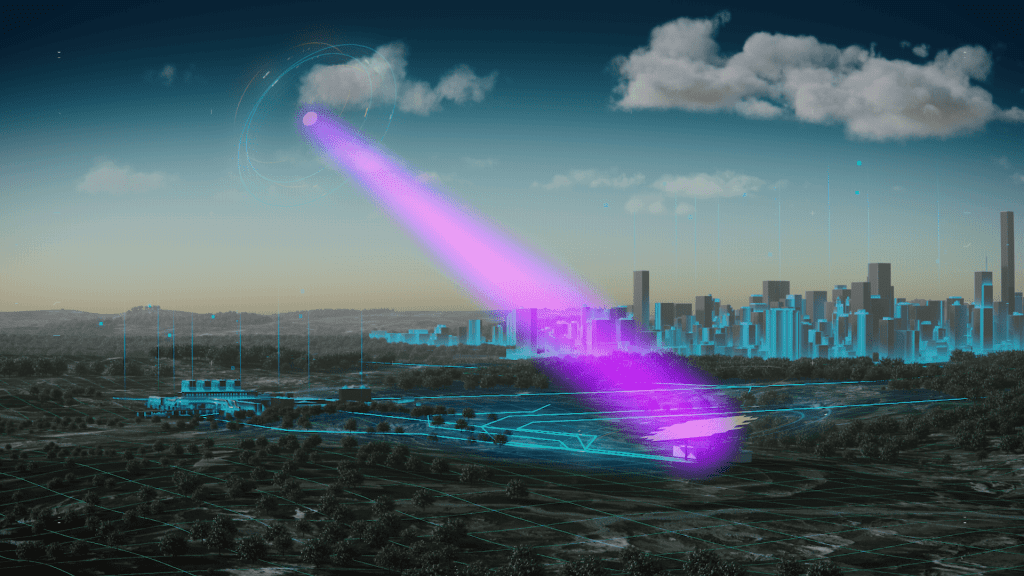Global energy demand is increasing. that it Big challenge To meet this demand through clean energy sources. Solar energy from space could be crucial to meeting this challenge. The European Space Agency (ESA) and TU Delft are working hard to make solar energy from space a reality. “Technology could be of great importance in the climate crisis. That is why we want to develop this technology as quickly as possible,” says Sanjay Vijendran of the European Space Agency.
- The European Space Agency (ESA) and TU Delft want to make solar energy from space a reality.
- Technology could be part of the puzzle to solve the climate crisis.
As the world’s population continues to grow, so does the demand for energy. The undeniable impact this has on our planet is becoming increasingly clear. The question is whether we can produce enough green energy to power ten billion people by 2050.
Solaris
The European Space Agency faces this challenge with… SolarisIt is an ambitious project that explores the possibilities of a pioneering method of generating energy: harnessing solar energy in space. The system consists of several solar power stations in space that continuously capture sunlight and convert it into electricity. It is then transmitted via microwaves to ground stations, where it is converted back into usable energy.
“This is not just a nice-to-have technology,” stresses Sanjay Vijendran, head of Solaris at ESA. “After conversations with many people in the energy sector, we came to the conclusion that there are huge challenges with existing resources. Each technology has its own limitations, such as nuclear waste or reliability issues. Therefore, exploring new resources, such as solar energy from space, makes sense.” .

According to the European Space Agency, solar energy from space will be possible within twenty years
The European Space Agency (ESA) wants to generate solar energy in space and transmit it in the form of microwaves to locations on Earth.
Advantages
Solar energy from space has many benefits. Unlike power plants fired by oil, gas, ethanol and coal, they do not emit greenhouse gases. Furthermore, because there are no clouds, atmosphere, or night in space, solar panels on satellites can capture much more energy than solar panels on Earth. Also, “solar collectors in space” do not occupy a large amount of land on Earth. What makes this technology special is that eventually power can be sent from space to different areas on Earth, eliminating the need for cables.
Challenges, and more challenges
The technology is well known. It can be compared to communications satellites that have been in use for six decades. Hence it is easy to get the basic ingredients. However, the technology must be developed further in order to improve performance and reduce costs.
One challenge is the mass production of space hardware. “Millions of components need to be manufactured at low costs. But there is evidence that this is possible, given the thousands of satellites being launched today. Moreover, the assembly of these parts in space, which is done by robots, is crucial to making space projects less Cost compared to manual assembly by astronauts. “So we need to answer the question of whether a fleet of autonomous robots in space can work together like workers on a construction site on Earth.”
Perhaps the most important focus of Solaris is creating a wireless transmission system, which allows electricity to be transmitted from space to Earth with minimal loss. “We need to prove that longer distances can be achieved, using larger antennas than we currently use.”
What then
ESA recently completed research focusing on commercial-scale installations. Preparations are currently underway for further research including an in-orbit demonstration mission. At the same time, technological development and scientific research activities are being initiated at ESA to further reduce the risks of space solar energy and understand its social and economic impacts. Finally, ESA is also working to improve understanding of the regulatory aspects of space solar energy and increase awareness among the energy sector and national governments.
demonstration
TU Delft is working with the European Space Agency and other partners (Sirin Orbital Systems AG and the University of Strathclyde) on Demonstration of solar energy from space. “This project involves small satellites (CubeSats), measuring ten x ten x ten centimetres,” says Angelo Cervone, associate professor at TU Delft and involved in the project. “If everything goes smoothly, we will go into the room for a demonstration. There are two possible ways to achieve this: using lasers or radio-frequency antennas. In this project the focus is on the latter. But both options may be possible.”
Stefano Spirita is also involved in the project. It focuses on satellite coordination. “Imagine throwing two stones into the water. The wave patterns should come together to make a larger wave; they shouldn’t cancel each other out,” he explains. “This analogy applies to our project. Coordination is crucial to ensuring that the power reaches the recipient effectively. Therefore, the relative position between two satellites must be known, to within half a centimeter, as the satellites move through space at a speed of seven kilometers per second. Huge challenge.
This is just one of the research questions the project addresses. Technology challenges, security concerns, funding – all of these factors must come together for the mission to be successful. So it is not surprising that space missions often take a long time. Small satellites are scheduled to be used in the next decade.
The more the better
The transition to a sustainable future is well underway. Therefore, the timely development of solar energy from space is crucial. “We want to implement the technology as quickly as possible,” says Vijendran. “We are working towards an operational commercial pilot in 2035.”

“Coffee buff. Twitter fanatic. Tv practitioner. Social media advocate. Pop culture ninja.”












More Stories
Which can cause an increase in nitrogen.
The Central State Real Estate Agency has no additional space to accommodate Ukrainians.
The oystercatcher, the “unlucky national bird,” is increasingly breeding on rooftops.